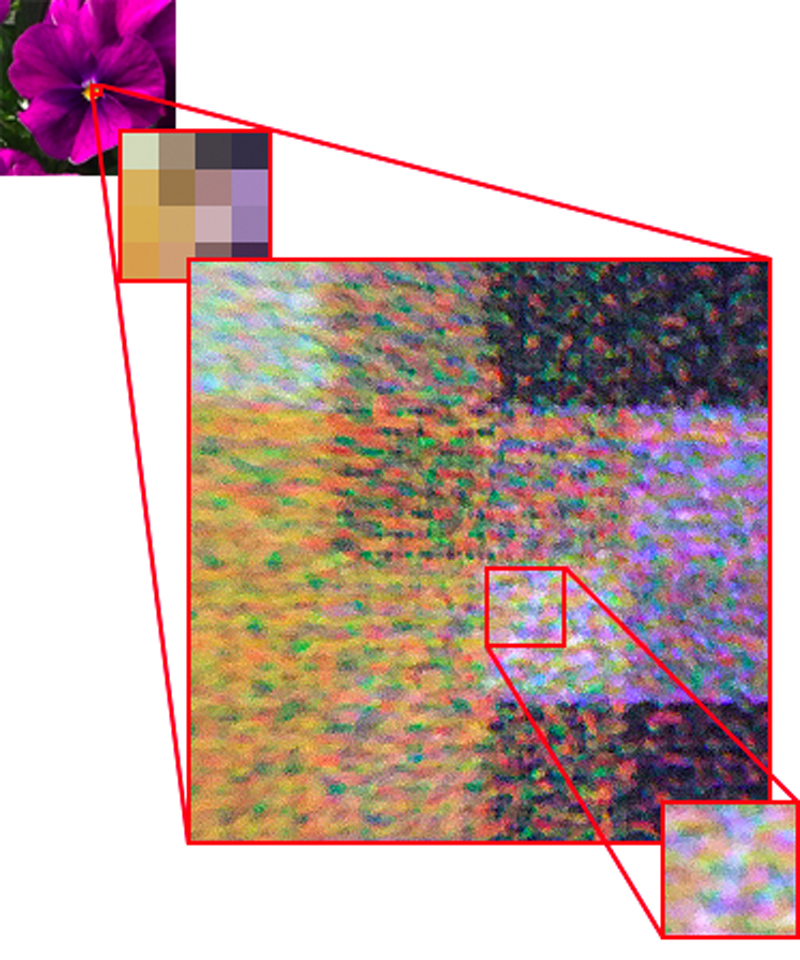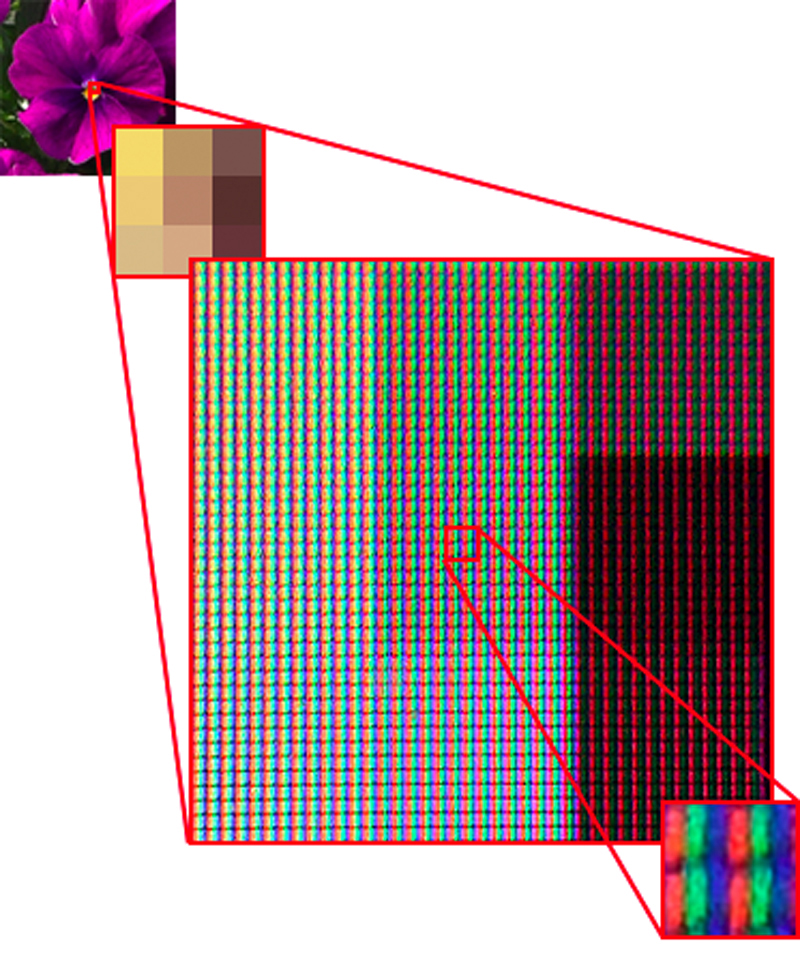Dot
ドット
Dot
When the word, “dot”, is used in relation to computer images and data input/output devices, “dot” can be assumed to indicate the smallest element in designating precision.
The unit, dpi (dots per inch), for example, is used for the resolution of bit-map data graphics and for the resolution of printer output. This indicates how many dots will fit into 1 inch. The smallest element in bit-map data is the pixel therefore it is also acceptable to use the word, “dot”, with the same meaning (strictly speaking, “pixel” is the more correct term). In that case, 1 pixel = 1 dot. Even though graphic resolution is expressed by ppi (pixels per inch), it is also correct to express it with dpi. In other words, if you are told that the resolution of graphic data is to be 350 dpi, you should create the data so that there are 350 pixels in every inch (350 ppi). Printer output resolution is expressed in dpi. Ink jet printers, for example, create text and graphics from densely packed droplets in small dots. In this case, we can assume that the “dot” is the smallest size that can be produced by the ink droplet (the smallest parameter achievable by the ink droplet). Therefore, when we say that the ink jet printer has an output resolution of 2,400 dpi, we mean that the inkjet printer has the precision to place 2,400 ink droplets in one inch (therefore, 1 pixel of a graphic does not equal 1 dot of a printer when sending 350 dpi bit-map data from a 2,400 dpi ink jet printer).
It is important to note that in liquid crystal and other displays as well, “dot” can be used with two meanings: the smallest physical element comprising the display, and the smallest element of graphic information that is displayed.
RELATED PAGES
 Printer output resolution corresponds to how finely the printer renders the smallest element of output.
Inkjet printers create text and graphics from densely packed droplets in small dots.
If you look at an image printed by inkjet printer through a magnifying glass, you can see the individual dots.
The image you see here is a close-up of an image printed by an inkjet printer.
Each pixel consists of multi-colored dots.
Printer output resolution corresponds to how finely the printer renders the smallest element of output.
Inkjet printers create text and graphics from densely packed droplets in small dots.
If you look at an image printed by inkjet printer through a magnifying glass, you can see the individual dots.
The image you see here is a close-up of an image printed by an inkjet printer.
Each pixel consists of multi-colored dots. Monitor display resolution, which is expressed in terms of the number of pixels in a matrix of small squares (e.g. 800 x 600 pixels or 1,024 x 768 pixels), can be adjusted by users.
The number of actual physical dots on a monitor (the number of RGB dots), meanwhile, varies by monitor model.
If you look at a monitor through a magnifying glass, you can see the individual RGB dots.
The image you see here is a close-up of an image on a monitor.
Each pixel consists of multiple RGB dots.
Monitor display resolution, which is expressed in terms of the number of pixels in a matrix of small squares (e.g. 800 x 600 pixels or 1,024 x 768 pixels), can be adjusted by users.
The number of actual physical dots on a monitor (the number of RGB dots), meanwhile, varies by monitor model.
If you look at a monitor through a magnifying glass, you can see the individual RGB dots.
The image you see here is a close-up of an image on a monitor.
Each pixel consists of multiple RGB dots.
